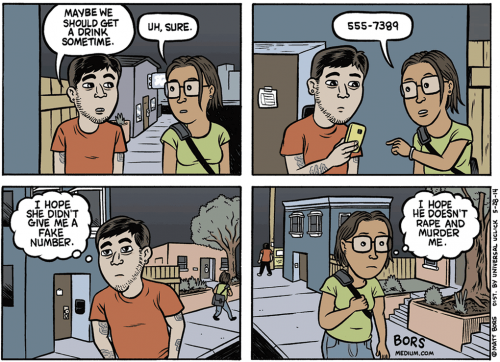You’ll note that we now have a separate thread for each exercise set. I won’t go back (if it’s even possible) to pull out exercises 5-8 and your responses from the first thread, but starting now we’ll be able to have people continue one discussion (on say, the video exercises, where it looks like Sundays wasn’t a great day for a lot of people) while the next begins.
Today’s exercise may be technically difficult for some of you, so I expect fewer people to complete it, but I hope everyone that joined us last week engages in the discussion. On the plus side, it requires a bit less time commitment than the video exercises, which may allow some people to catch up.
Exercise 9: Think of a gender neutral object. No. Not that one. Because gender, right? Exactly. That other one. Now you’ve got it. Ready? Sketch it. Sketch it without any context whatsoever to keep ideas about gender in relation to the object free from distractions caused by gender in relation to the context in which the object is drawn.
When finished drawing, upload that sketch somewhere (I recognize this won’t be possible for everyone).
Exercise 10: 3rd Report. Narrate a bit about choosing an object (whether or not you were able to post your sketch). Was it easy? Hard? Did the first thing that came to mind remain your choice? Now talk about the actual process of drawing. Did you stop, erase, and/or redraw at any point because of concerns that the sketch might not communicate gender neutrality?
In this report, provide a link to your sketch if you were able to upload an image.
Exercise 11: Discussion. Look at a number of the uploaded images. If there are any choices (or implementations of choice, through the image in the sketch) with which you disagree, say so. Provide an argument for gendering the object someone else considered gender neutral. If there are none with which you disagree, find someone’s comment that does disagree with one or more choices. Read that person’s argument and respond. Are you persuaded? Why or why not? You are welcome to defend your own choice in discussion, but if you do, you must do it using new arguments than the ones you made in exercise 10 when you initially discussed your choice and process.
Previous workshop thread. Next Workshop Thread.
*must. not. type. “:Electric Boogaloo.”
Damn you, Ed Brayton!


